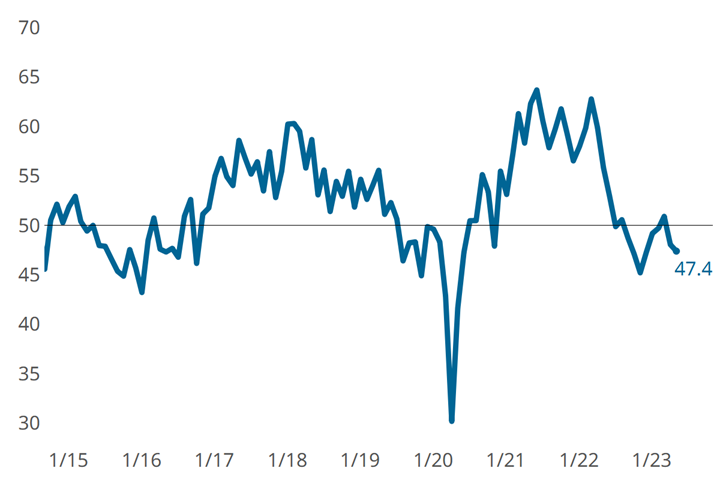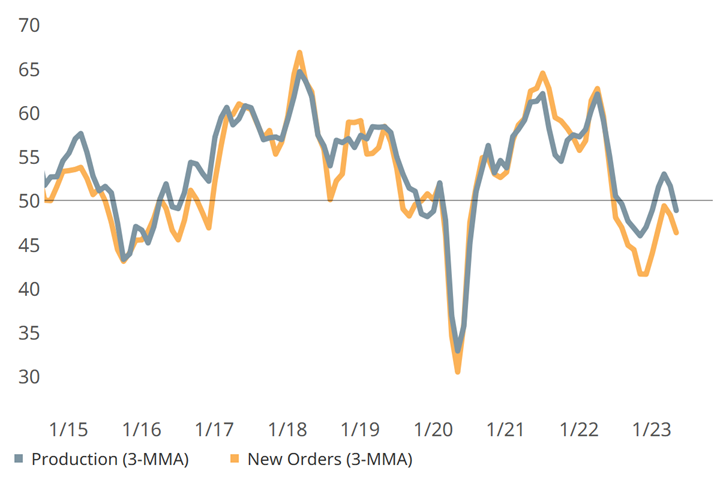May Moldmaking Index Trends Downward
Contraction, experienced by most May components, continues to be familiar territory for the GBI: Moldmaking Index.
#ecomonics
GBI: Moldmaking activity dropped just 0.6 points in May. Photo Credit, all images: Gardner Intelligence
Moldmaking activity overall contracted again in May, the Gardner Business Index (GBI) Moldmaking ending the month at 47.4, only slightly down from April’s 48.
Contraction has been familiar territory for the industry over the past nine months. At an Index component level, each was unchanged or took a downward turn in May.
Four of six components contracted in May. Only supplier deliveries and employment were above 50 in May — albeit moving at slow and steady rates, respectively. Specifically, supplier deliveries lengthened in May at about the same rate as April. A sustained plateau for this component may signal that at least some of the long-term effects of COVID-19 related to supply chain are being put behind us.
Two components, exports and backlog, contracted at what has been about the same rate for three months straight. And production and new orders, which typically move hand-in-hand, were no exception in May — production contracted for the first time since January 2023 and new orders contracted again like it has for almost an entire year.
Production and new orders moved hand-in-hand, contracting in May. (This graph is on a three-month moving average.)
RELATED CONTENT
-
Moldmaking Industry Accelerates Into 2022
Moldmakers have learned to do more with less, according to January Index readings. Production activity has remained robust, despite a relatively weak employment market and struggling supply chains.
-
Moldmaking Index Reports Slowing Expansion for Second Sequential Month
Index reports sequentially slowing months for first time in 2021, with total new orders and export activity breaking a longstanding equilibrium.
-
Moldmaking Industry May Have Found its Post-COVID Floor
The MoldMaking Index points to the expansion of new orders for the first time since COVID-19 shook the economy in March.












